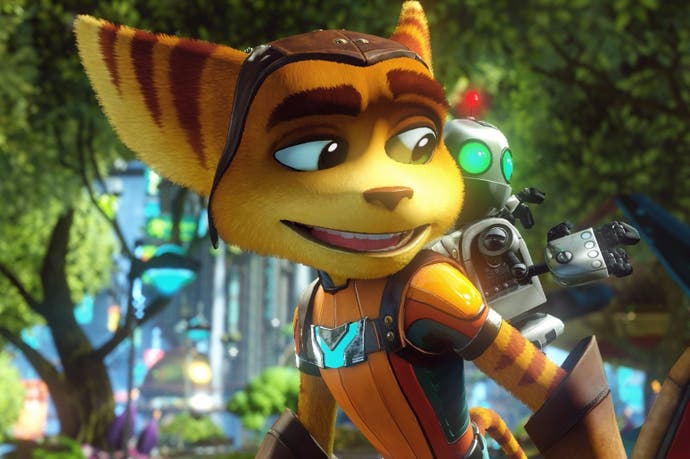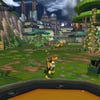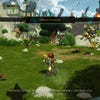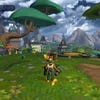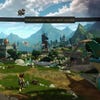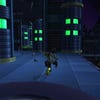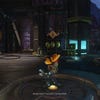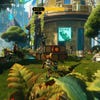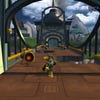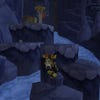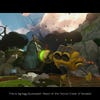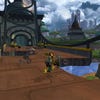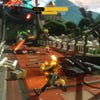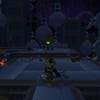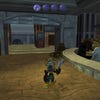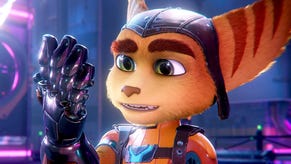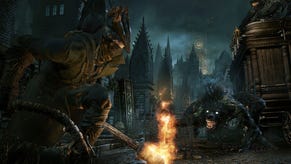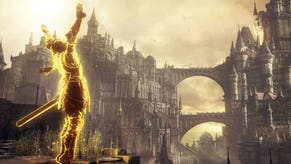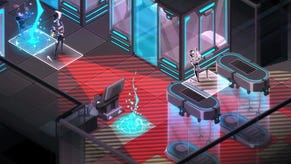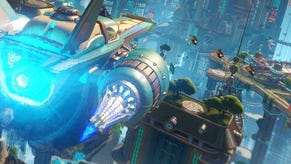Digital Foundry vs Ratchet and Clank on PS4
Insomniac's iconic work compared and contrasted across three generations of PlayStation hardware.
Ratchet and Clank comes to PS4 in what can only be described as an epic, wholesale reimagining of the PS2 original. Taking advantage of the latest rendering technology, Insomniac delivers a superb platformer that ties into the upcoming CGI movie, closely resembling it in terms of visual style. It's a remarkable achievement that shows just how far 3D graphics have evolved from the franchise's PS2 origins, but there's more to the game than just a dramatic visual upgrade. Comparing it with the PS2 original and PS3 HD remaster, it's clear that this is a complete remake with redesigned levels, new story sequences and revised gameplay.
The classic Ratchet & Clank formula is brought up to date using the template established in the PS3 sequels, emphasising large scale action, but without sacrificing the traditional platforming the earlier installments are known for. Take the early Veldin level for example, set in the middle of an invasion. In the original game the focus is largely on melee combat and slower-paced platforming. In the remake Insomniac ups the ante considerably: enemies litter the environment making it appear like the planet is at war, while the gameplay is much faster-paced. Shooting takes point here, with the action bearing more of a resemblance to Tools of Destruction or A Crack In Time. There's the sense that the developers have really gone all out in pushing for a more cinematic, action-packed game - but also one that doesn't abandon the series' simpler platform roots.
Of course, the visual upgrade plays a key part in bringing Ratchet and Clank's latest adventure to life. And on that front, the results are often spectacular, providing a comfortable generational leap over the PS3 series entries. However, the compromise comes in the form of targeting 30fps - a halving of frame-rate over most of the previous Ratchet and Clank titles - and this has implications for the gameplay, with controller response reduced in favour of richer visuals. It's a decision that divided fans with PS3's Into The Nexus, but the results here are more positive. Performance is a lot more stable, and this does have benefits: steady frame-rates keep things feeling consistent, lessening the impact of the reduced frame-rate to a certain extent.
The decision to target 30fps allows Insomniac to give the game a CGI-style look that wouldn't be possible otherwise on PS4 hardware. A native 1080p framebuffer is in place, showing off the game's colourful worlds and wacky characters with vastly superior sharpness and clarity over the 720p image of the PS3 HD remaster and the 480i PS2 original. The use of post-process anti-aliasing also works well much of the time, helping to smooth over more organic environmental elements. However, straight lines and sub-pixel details don't fare so well, and this leads to pixel-popping and shimmering in these areas. For example, the rocky landscape on Veldin mostly appears smooth with relatively few artefacts, but the cityscape on Kerwan doesn't look anywhere near as clean.
Despite these inconsistencies, the game's vibrant and richly detailed environments still impress: fondly-remembered locations are rebuilt from the ground up to take advantage of PS4 hardware and key landmarks and iconic gameplay segments from the original frequently resurface, but much of the level design sees major revisions. Previously accessible paths are now blocked off by buildings and alterations in layout, with new areas seamlessly integrated into the old. The increase in geometry-pushing power on modern hardware allows for highly detailed environments, adding a new world of detail to the worlds Insomniac has created.
Key iconic gameplay moments are also radically overhauled. For example, the train sequence on Kerwan is short and rather uneventful in the PS2 original, but in the remake this section is greatly expanded with lots of additional platforming and hectic shoot-outs, making it feel much more exciting. Earlier levels are replaced, fleshing out the narrative of Ratchet and Clank's first meeting, while others feature brand new opening sections that set the stage for the chaotic blasting that usually unfolds. The end result is that the world feels more structured, with a balance between eye-catching set-pieces and old-school exploration, better integrating gameplay and story-telling.
This shift in balance also extends into the core action too. Shooting plays a much bigger role here, but slower-paced platforming is given more room to breathe. There's still a large focus on action, and this is enhanced by liberal use of lavish effects work. Debris and particles scatter across the ground, while depth of field, and camera and object blur add intensity and a cinematic flair to the game. The visual style is more reminiscent of a Pixar movie, and Insomniac makes use of various effects, lighting and shader passes to create a distinct look that closely resembles the upcoming Ratchet and Clank film. Physically-based rendering, ambient lighting, and complex shaders allow for surfaces - such as metal, glass, and rock - to appear realistic, and this generates a level of atmosphere across various locations not found in previous series entries.
In fact, the remake's cut-scenes use a combination of real-time in-engine sequences and footage taken from the upcoming movie - and it's remarkable just how well these integrate together. Image and shadow quality are the main points of difference here, with jaggies appearing in in-engine scenes, while the movie clips appear smooth. Similarly, shadow edges throw up artefacts on real-time sequences, and these are absent across the movie footage. The level of detail across the characters is particularly impressive, and modelling quality in this area extends across the whole game. It's not just the main protagonists and villains that appear intricately detailed, but enemies and secondary characters too. Animation also stands out, with lively routines that infuse personality into every element on screen.
All of these changes result in a truly different experience from Ratchet and Clank's original PS2 debut. The core aspects that make Ratchet and Clank stand out from other platformers are still here, but these are reworked and refined to another level. By comparison, the PS3 HD remaster adds higher resolution textures and slightly tweaked geometry over the PS2 game, but otherwise it's the same game but delivered in high definition. The PS4 remake is vastly different beast altogether.
Insomniac's visual push for CGI like qualities is impressive, but this is only possible due to the studio targeting 30fps. This provides double the render time per-frame compared to running at 60fps, allowing for a complex blend of lighting, effects, and geometry detail that helps to recreate the movie-like aesthetic. However, there is a tangible difference in how the remake plays compared to previous titles that run at 60fps. The controls feel weightier and less precise, and initially it feels like a real step down. For those used to this series playing at 60fps it takes a while to adjust, but after a few hours' gameplay starts to feel more effortless and the increase in controller latency is less of an issue. Jumping and melee attacks never feel quite as tight as you expect, but the experience is far from sluggish and the gameplay holds up very well.
The mostly solid level of performance pays dividends here, ensuring that there are no obvious variances in smoothness and controller response. Action-heavy segments of gameplay regularly feature large enemy counts and long draw distances, but the engine rarely deviates from delivering a locked 30fps under load, with just occasional one or two frame dips. These are often hard to spot and gameplay remains unaffected. The response doesn't feel as good as the older 60Hz titles, but it's more solid than Into The Nexus on PS3, where Insomniac first made its controversial 30fps transition.
Ratchet and Clank - the Digital Foundry verdict
Insomniac's Ratchet and Clank reboot is an interesting take on the series that brings plenty of refinements to the classic gameplay, with elements to suit fans of the more relaxed PS2 instalments and the action-heavy PS3 titles. For some the 30fps cap will be a sticking point, and it's certainly something that has a tangible impact on gameplay. However, the stable frame-rate makes it easier to adjust, and once you adjust, you'll find one of the best Ratchet and Clank games made in years.
While Ratchet and Clank serves as a re-envisioning of the original PS2 game, the developers have carried out a lot of work in bringing the experience up to date without changing what fans liked about the series. The outrageous weapons, amusing script, solid platforming, and action-packed shooting are all present and correct, while the visuals are quite beautiful and the game's blend of imaginative characters and striking visuals grab your attention from the get-go.
We had some reservations about Insomniac once again revisiting the same core material, but it actually comes across as fresh and appealing while at the same time paying homage to the series' heritage. Platform games have largely been forgetting over the last generation, but Ratchet and Clank is one of the best we've played in years and is worth checking out for existing fans of the series and newcomers alike.
